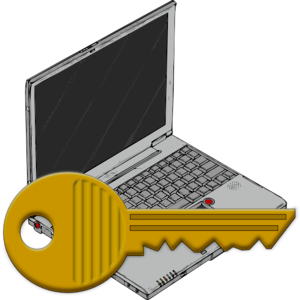10 Steps to PC Safety!
 1) Patch, Patch… PATCH!
1) Patch, Patch… PATCH!
An unpatched machine is more likely to have software vulnerabilities that can be exploited. Turn on automatic updates, and allow them to update your machine, and reboot, afterward.
2) Install protective software.
There are a number of free anti-virus software packages. I recommend BitDefender Free.
3) Choose STRONG passwords.
Strong passwords use a combination of letters, numbers, and special characters, or a multi-word pass-phrase. Create a unique password for each on-line account, NEVER re-use a password! LastPass can manage all of your passwords for you – and it’s free!
4) Back up on a regular basis.
Scheduling routine backups can protect you from the unexpected. Always keep a few months’ worth of retrievable backups. Keep one backup on-site, and one in “the Cloud.” EaseUS Backup is free!
5) Control access to your machine.
Don’t leave your computer in an unsecured, public area, especially if you’re logged on. The physical security of your machine is just as important as its technical security.
6) Use email and the Internet safely.
Ignore unsolicited emails. Do not open attachments. Be wary of ANY attachments, links, and forms in emails that come from people you don’t know, or which seem “phishy.” Avoid untrustworthy (often free) downloads. Use MailWasher Free to clean your email.
7) Use secure connections.
When connected to the Internet, your data can be vulnerable while in transit. Use remote connectivity and secure file transfer options. Protect sensitive data. Use a good VPN package. I really like IPVanish. Please use THIS LINK to help the show, and get a great deal!
8) Protect sensitive data.
Securely remove sensitive data files from your hard drive, especially when recycling or re-purposing your computer. Physical destruction of drives is the best way! Protect sensitive files using the encryption tools built into your operating system.
9) Use desktop firewalls.
Windows, Mac and Linux computers use basic desktop firewalls to protect your computer files from being scanned. Make sure they are properly configured.
10) Most importantly… stay informed!
Stay current with the latest developments: Follow me on Facebook and Twitter. Subscribe to my YouTube Channel. Read the Dr. Bill.TV Blog!